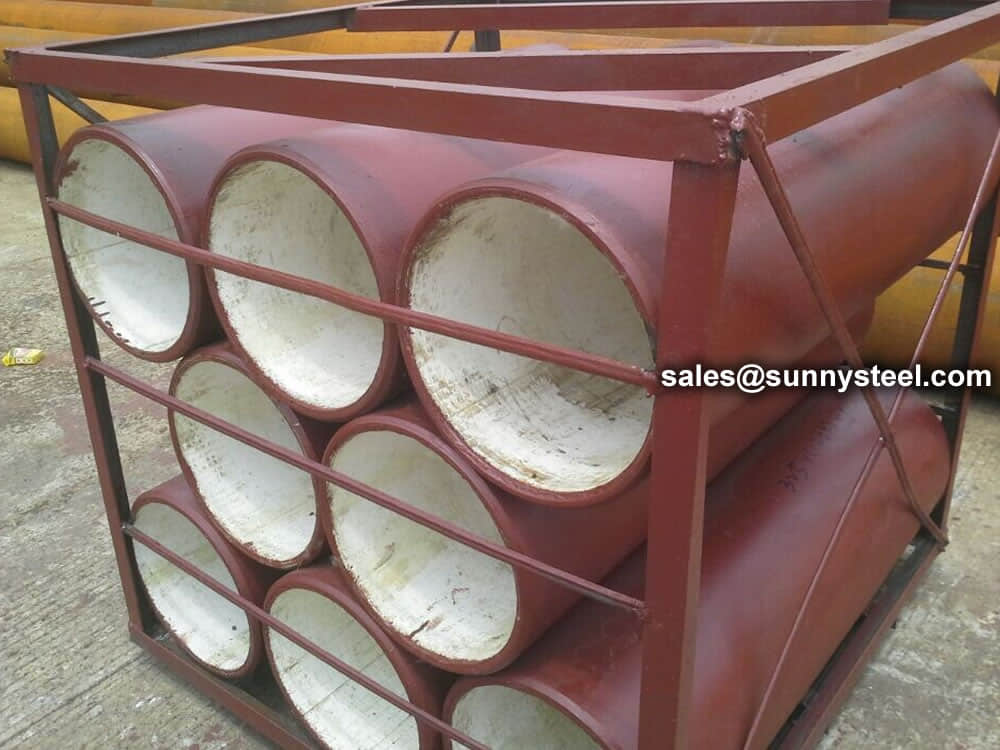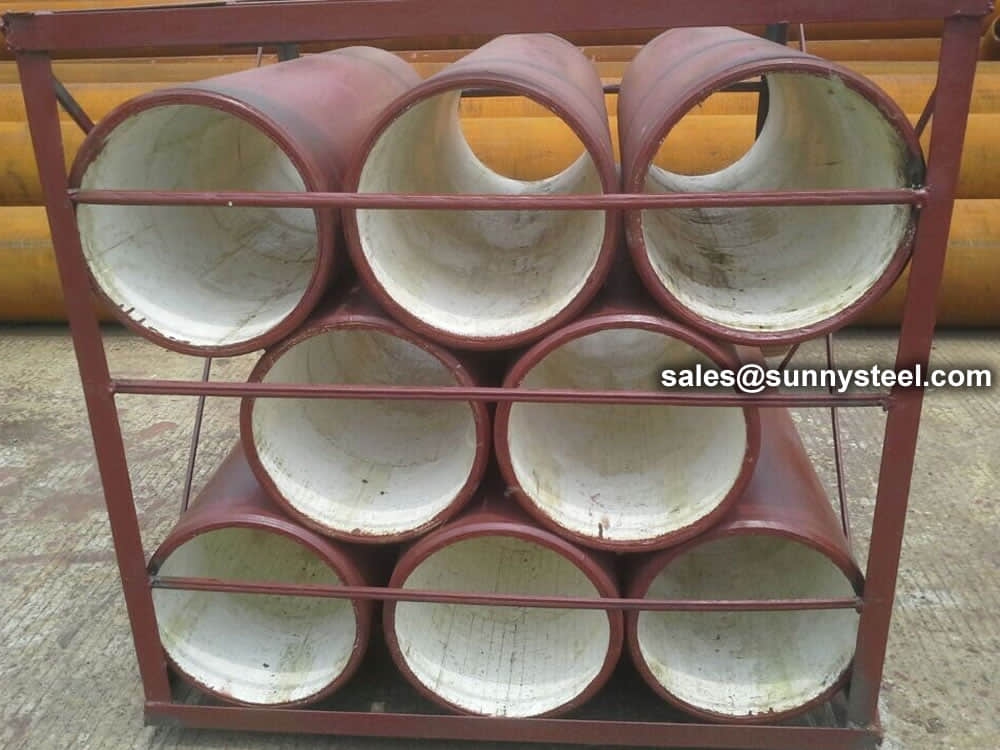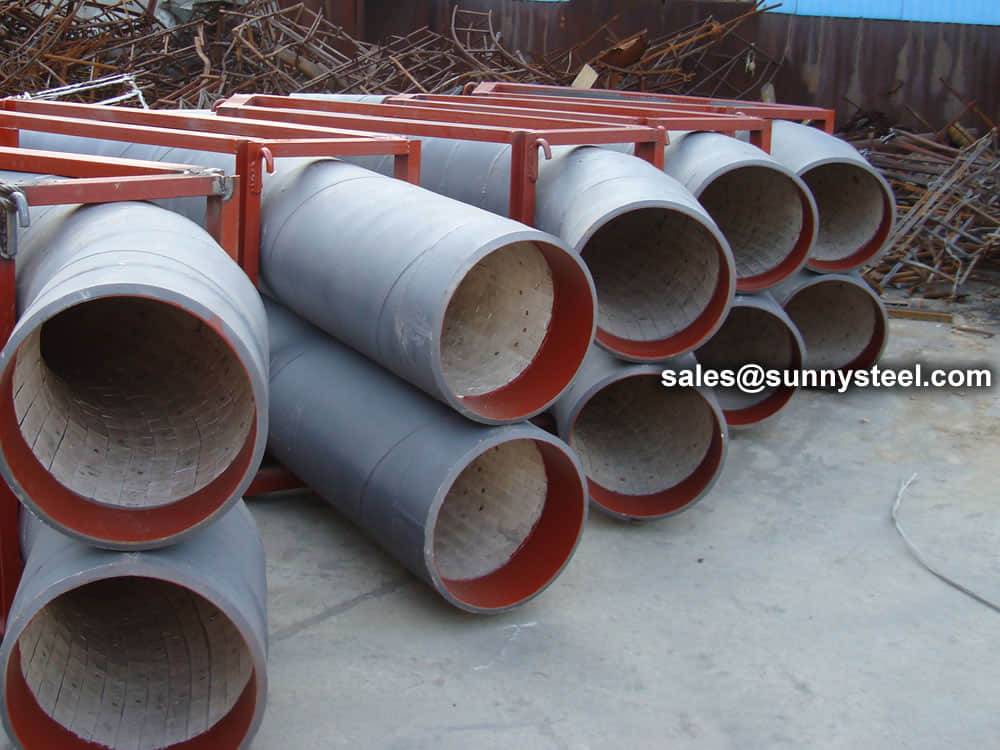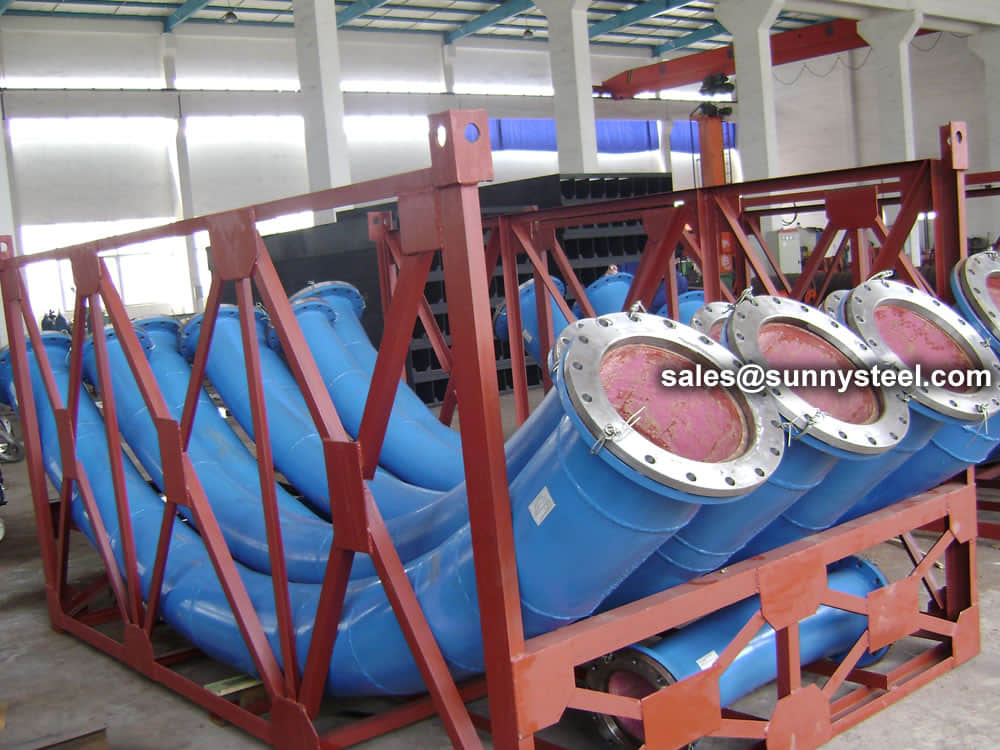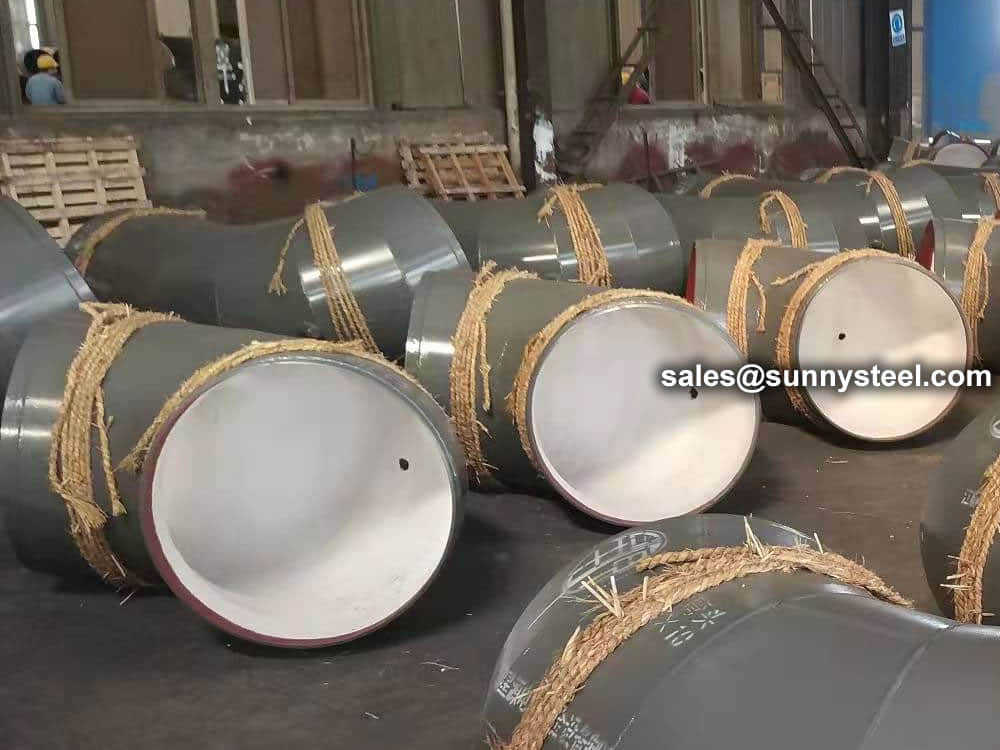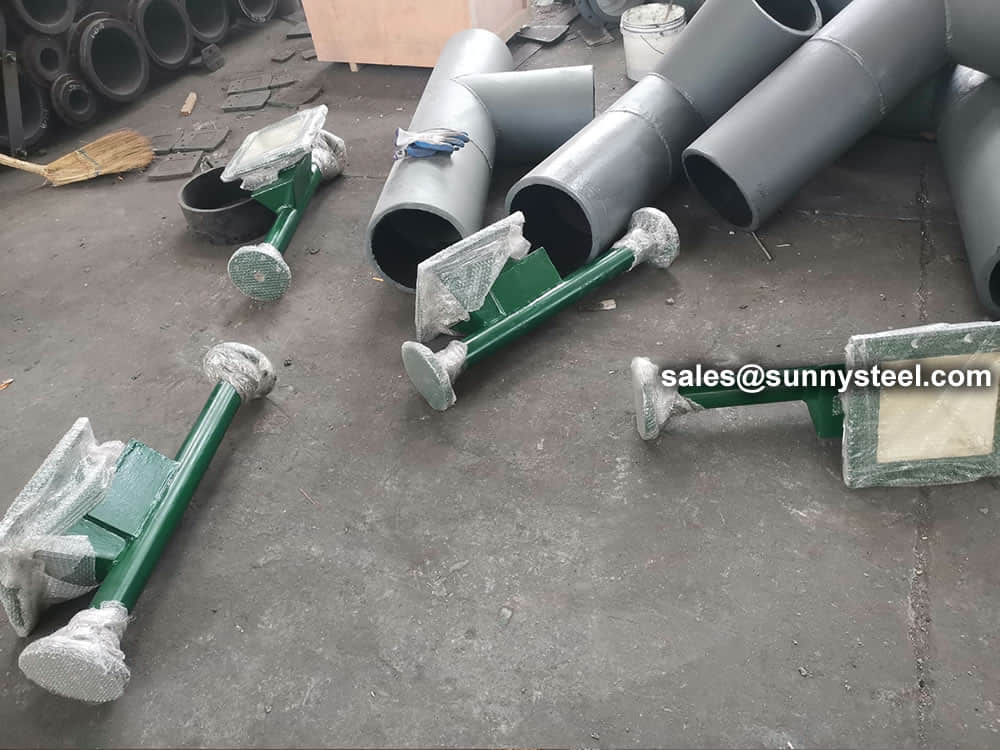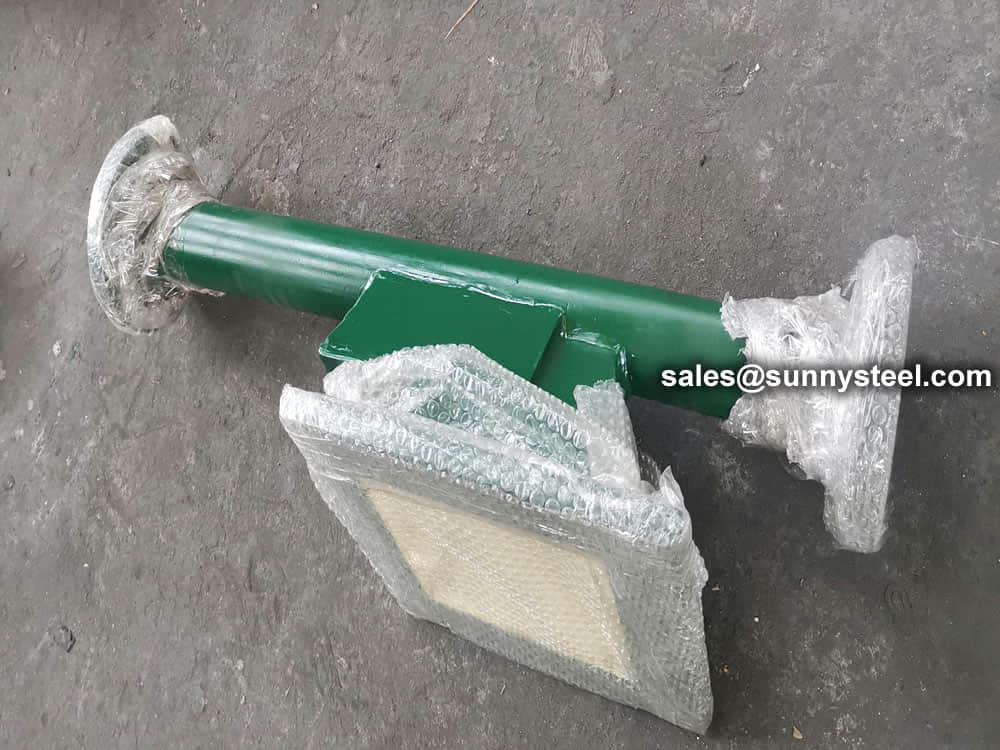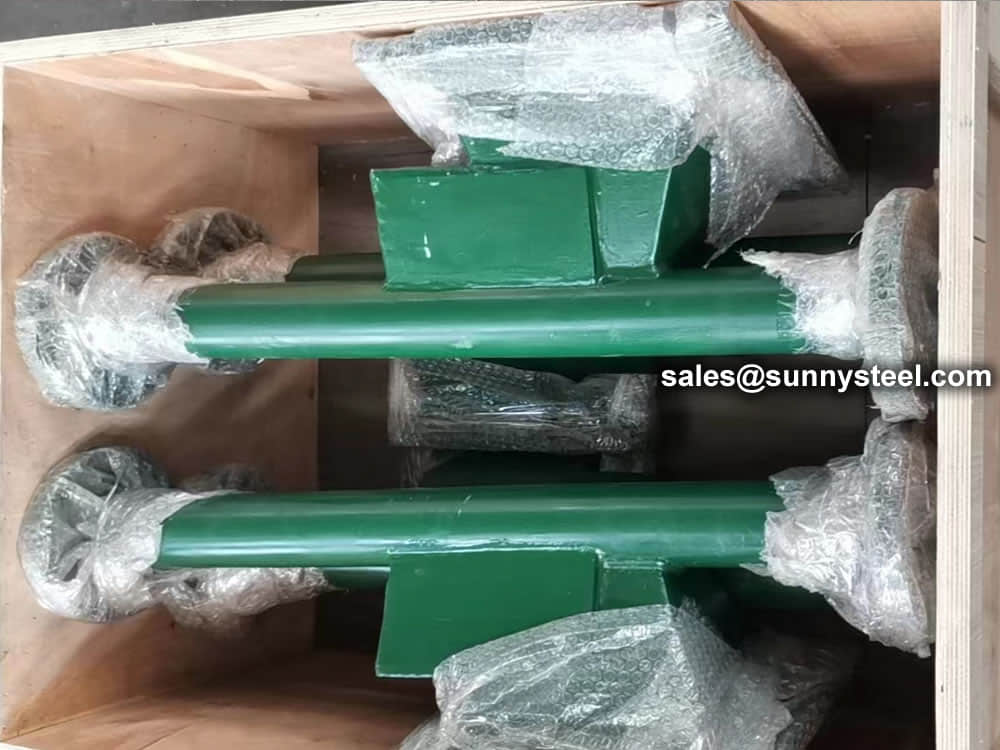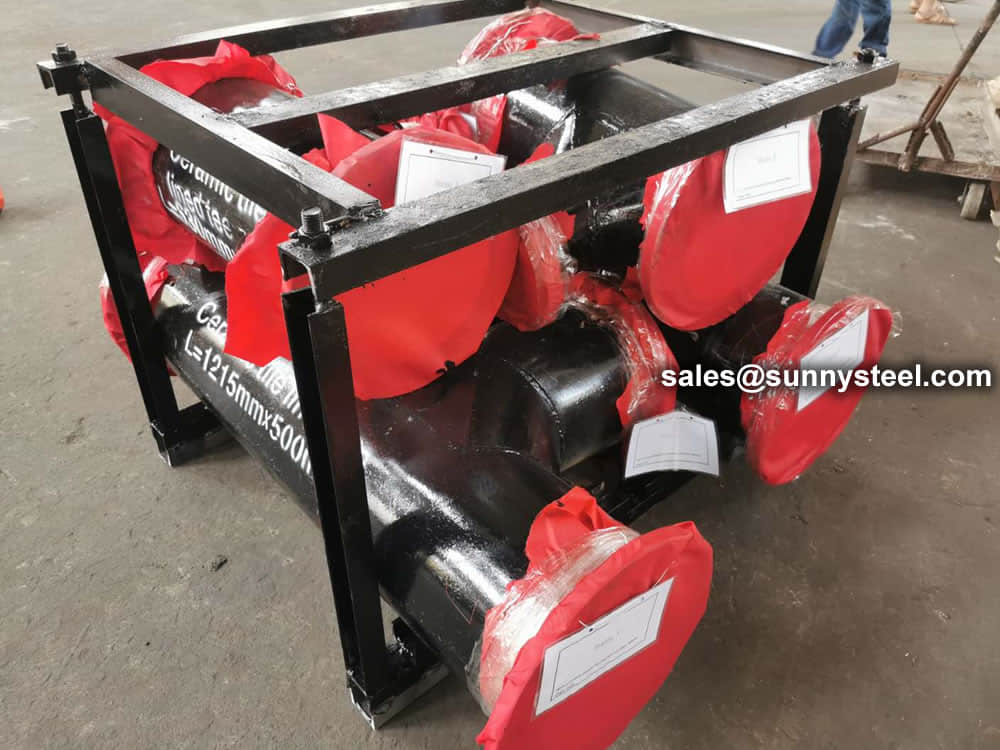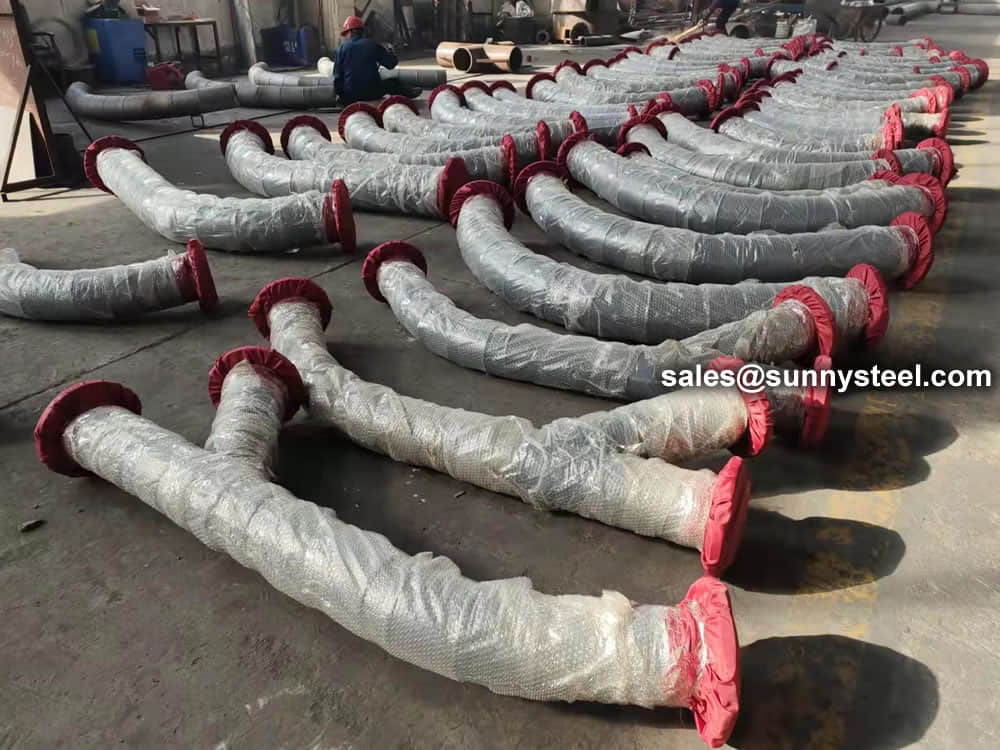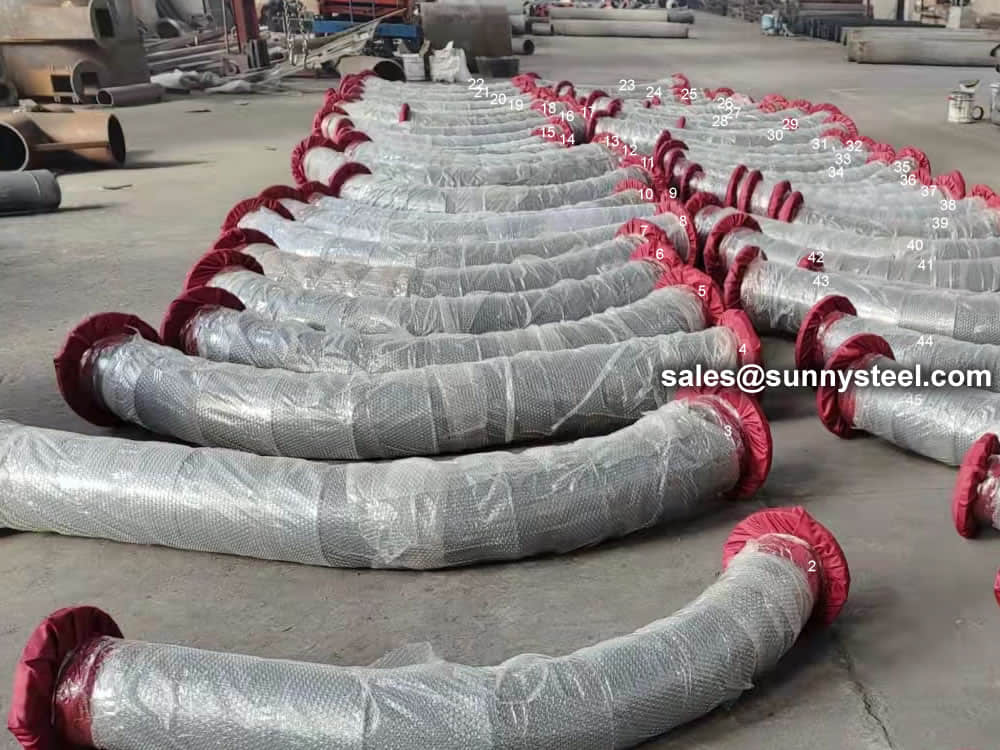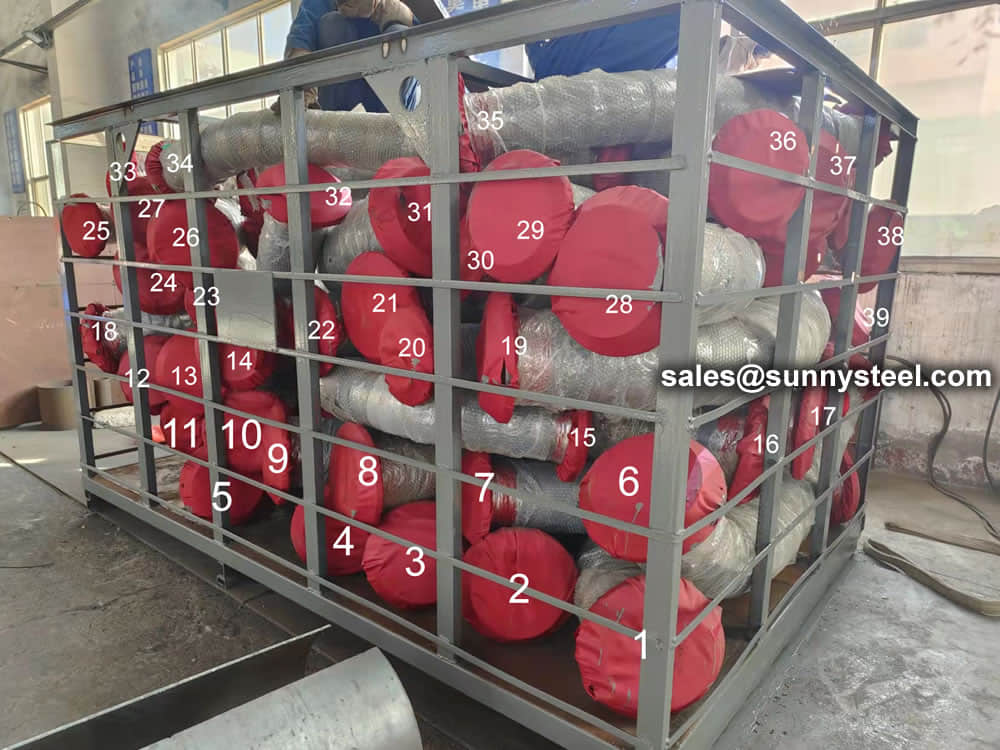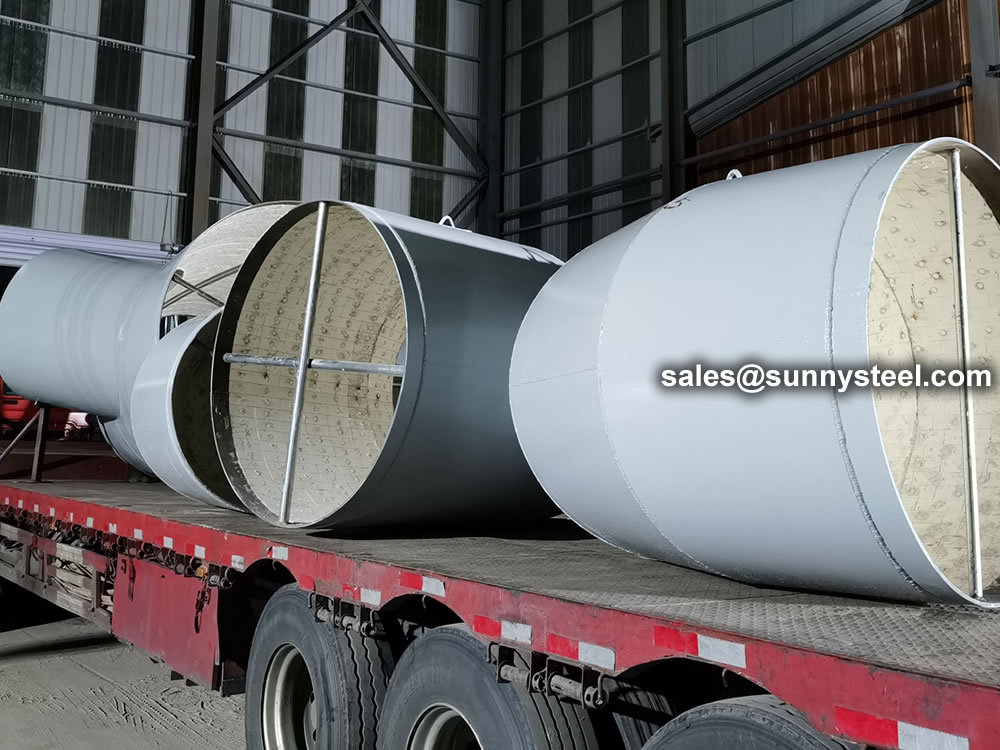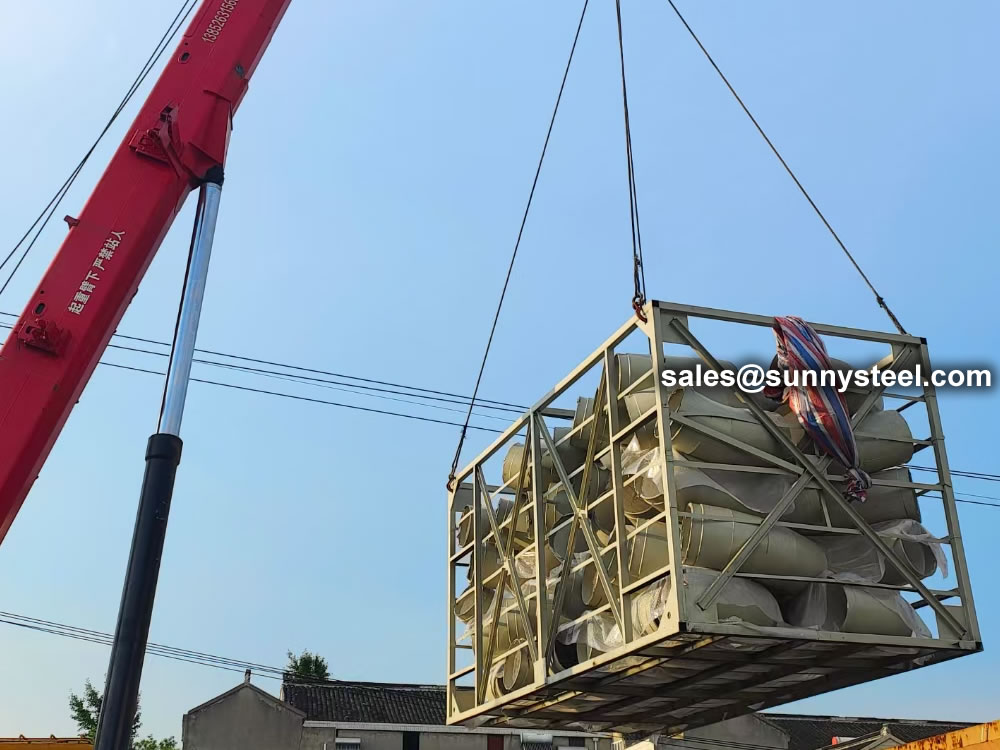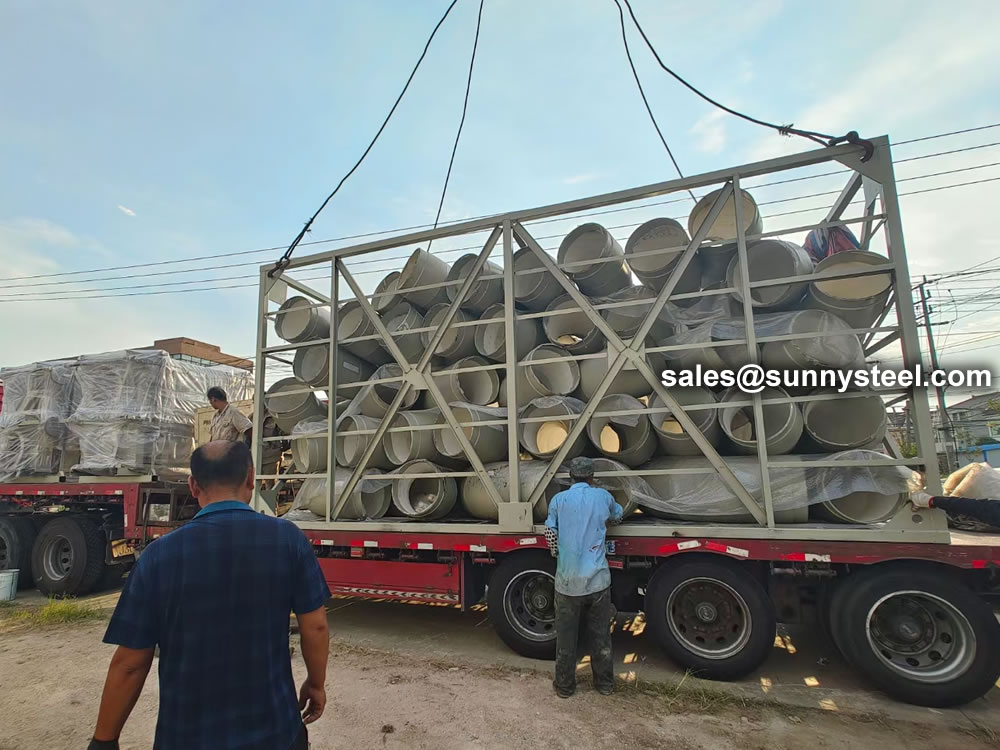92% Ceramic Lined Coal Pipes
Discover our high-abrasion 92% ceramic lined coal steel pipes, designed for durability and performance in harsh environments.
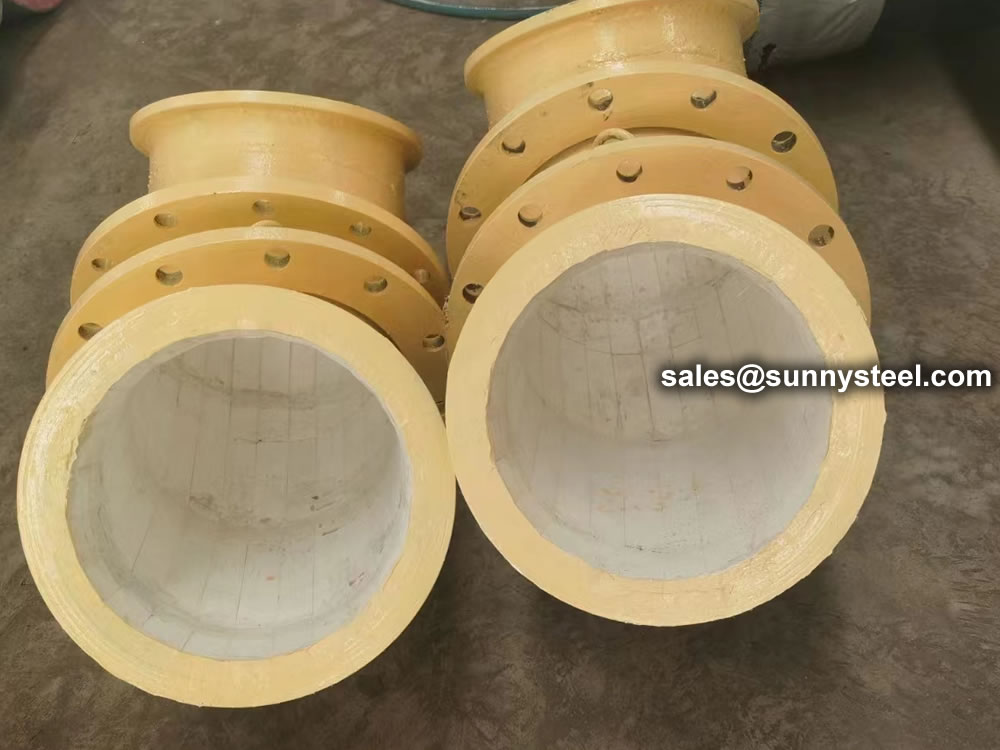
The ceramic tile lined elbow is the use of high temperature, strong adhesive will be used to paste alumina ceramic tiles the pipe wall, after the heat curing to form a solid anti-wear layer.
Download PDFTo achieve the best abrasion-resistant solutions, thicken ceramic liners can be used in the elbow which has serious abrasions.
Ceramic tile lined elbow fabrication technology principle, special corundum ceramics, made from Al2O3 as raw material, with rare metal oxides as solvents, and sintered at high temperature by 1730 ℃, are combined with wear-resistant ceramic pieces and block bricks in the pipe wearing surface through bonding, welding, inlay, riveting and socket technology. Thus forming a surface with excellent abrasion resistance, and the matrix still uses the composite pipe of the ordinary metal material.
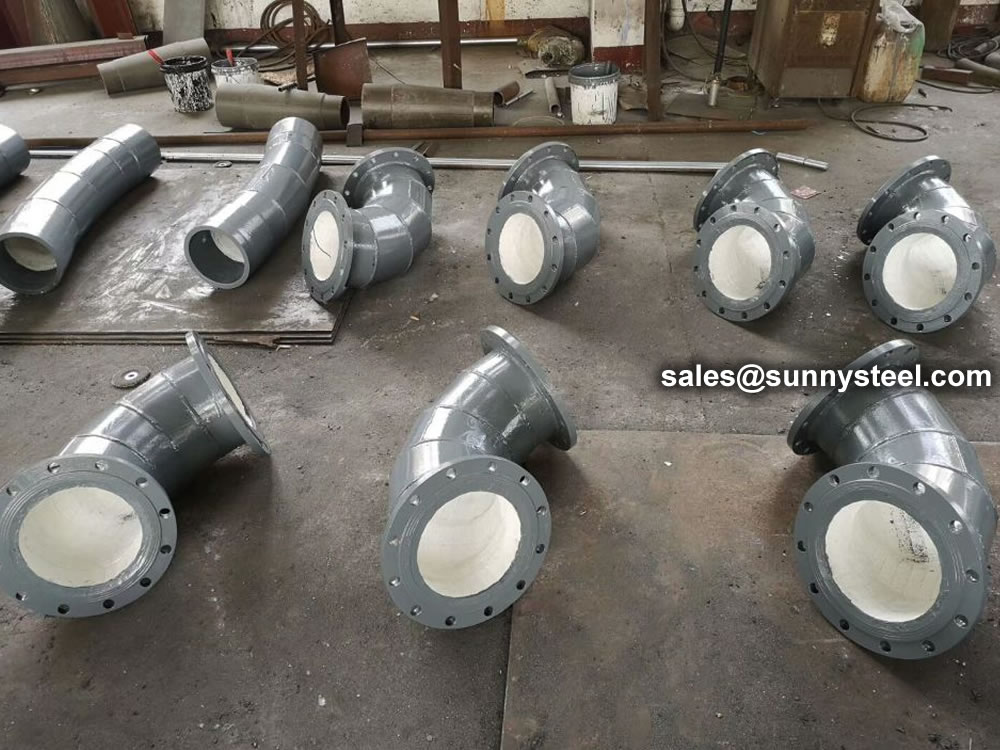
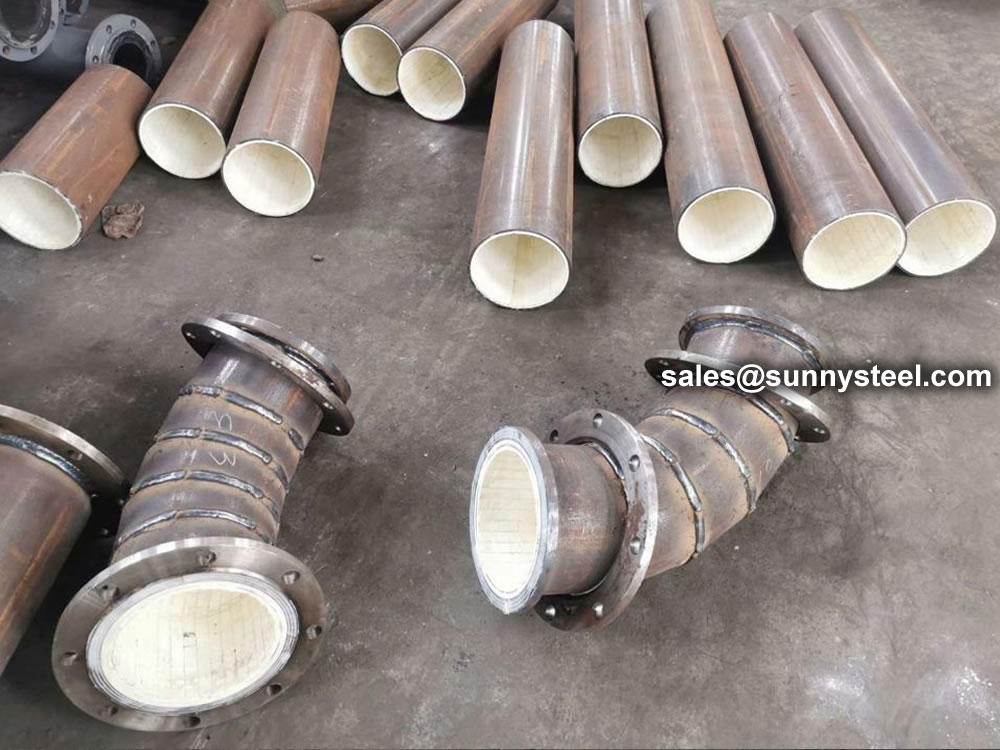
According to different needs of the choice of wear-resistant ceramic patches, to meet the special needs of users of technical conditions. Compared with the traditional all-metal high alloy pipe fittings, the working face has higher abrasion resistance, which can make the whole wear-resistant and anticorrosion service life of the pipe increase several times to dozens of times times. Overall weight of the first mate down, reduce the amount of steel, reduce the cost of equipment and maintenance costs, improve economic efficiency.
A ceramic tile lined elbow is a type of elbow pipe fitting that has been internally coated with ceramic tiles to provide superior resistance to wear, abrasion, and corrosion. These ceramic tiles are securely bonded to the inner surface of the elbow using high-temperature adhesives or epoxy, creating a robust and protective layer.
Ceramic tile lined elbows find common use in industries where the pipeline system comes into contact with abrasive materials, such as mining, power generation, cement production, and chemical processing. They are highly effective at shielding against the erosive impact of abrasive slurries, high-velocity particles, and corrosive fluids.
The ceramic tile lining within the elbows serves to minimize wear and extend the lifespan of the pipeline system. It results in a smooth inner surface, reducing friction and turbulence in the fluid flow, thus enhancing overall efficiency. Additionally, the ceramic tiles exhibit exceptional hardness and resistance to chemical attacks, ensuring reliable performance in challenging environments.
When employing ceramic tile lined elbows, it is crucial to consider proper installation techniques and maintenance procedures to maximize their effectiveness. Regular inspections and maintenance checks help identify any signs of wear or damage to the ceramic lining, allowing for prompt repairs or replacements.
| Flexure strength | Tensile strength | Elongation | Cross section stretch Ratio | Impact toughness | Hardness of wearable layer | Hydrostatic testing pressure |
|---|---|---|---|---|---|---|
| MN/㎡ | MN/㎡ | % | % | J/c㎡ | HRC | Mpa |
| >610 | >700 | 5 | 5.1 | >15 | >38 | 5.6-12.9 |
To achieve the best abrasion-resistant solutions, thicken ceramic liners can be used in the elbow which has serious abrasions.
Ceramic tile lined pipe is our company to absorb similar products at home and abroad on the basis of advanced technology developed a shell for the steel body, within the wear-resistant ceramic tube of the new composite pipe products, with high wear resistance long service life and so on.
The use of anti-off porcelain tube, porcelain tube mosaic, so that paste more flat, more solid with a strong inorganic adhesive paste, wear-resistant steel bowl welding, porcelain and steel body combined to form a double reinforcement to ensure that the porcelain tube does not fall off. The installation of flexible, high wear resistance, processing convenience, the cost is moderate.
High hardness
Rockwell hardness of high alumina ceramics is up to HRA80-90 which is second only to diamond and far exceeds wear-resistant steel stainless
Excellent wear resistance
The wear resistance of high alumina ceramics is 266 times that of manganese steel and 171.5 times that of high chromium cast iron. According to our investigation & follow-up to the clients, the service life of equipment can be prolonged over 10 times under the same working conditions.
Corrosion resistance
High alumina ceramics are inorganic oxides with extremely stable molecular structure and no electrochemical corrosion, thus they can resist erosion of acid, alkali, salt solutions and organic Solvents.
Thermostability
Working temperature of high alumina ceramics can be as high as 1400℃.
Good self-lubricity
High alumina ceramics have the properties of self-lubricity and in adhesion, the roughness is only 1/6 that of steel pipes thus less flow Resistance.
Light weight
The density of high alumina ceramics is about 3.6g/cm3, which is only half that of steel, thus easy for construction and installation.

Ceramic tile lined pipe is composed of three layers: outer steel pipe layer, corundum layer, and ceramic glue layer. The inner ceramic layer is white from the surface. The ceramic is generally 95% ceramic, and the temperature is generally below 200°C.
At present, the common ceramic sheets lined with ceramic composite pipes are: ceramic block, dovetail mutual pressure, welding type, mosaic, card slot and so on. It has the characteristics of wear resistance and long service life.
The ceramic tile is pasted on the steel pipe with high temperature wear-resistant glue to play a wear-resistant role, and the pipe is generally white. Generally used for large diameter pipes.
Steel body Grinding-> Ceramic patch-> Paste-> Welding-> Detection
Bends and other profile sections can be clad in whole and this process has changed the traditional practice to fabricate bend and other profile sections by drawing polyline without changing flow pattern of material inside piping, greatly reducing conveyance resistance of material.
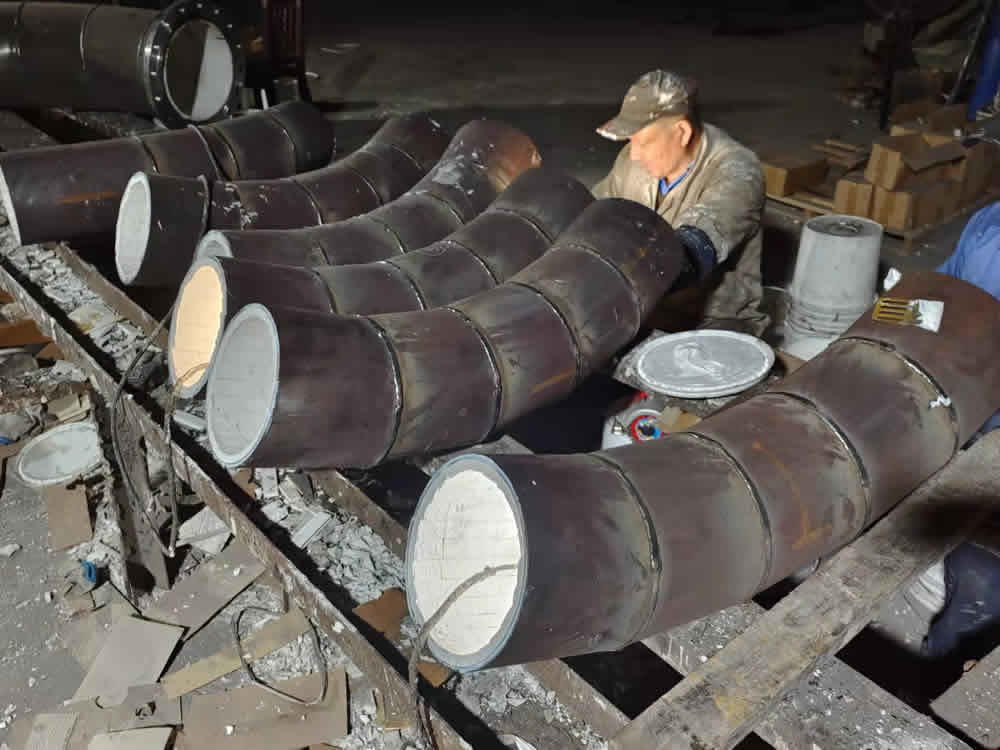
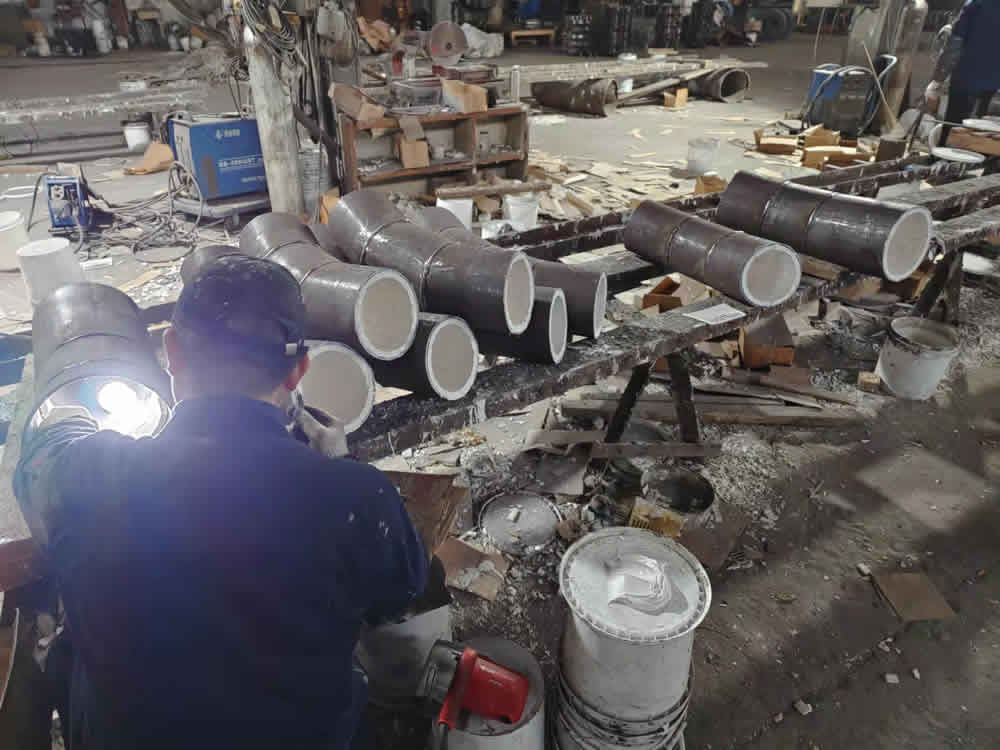
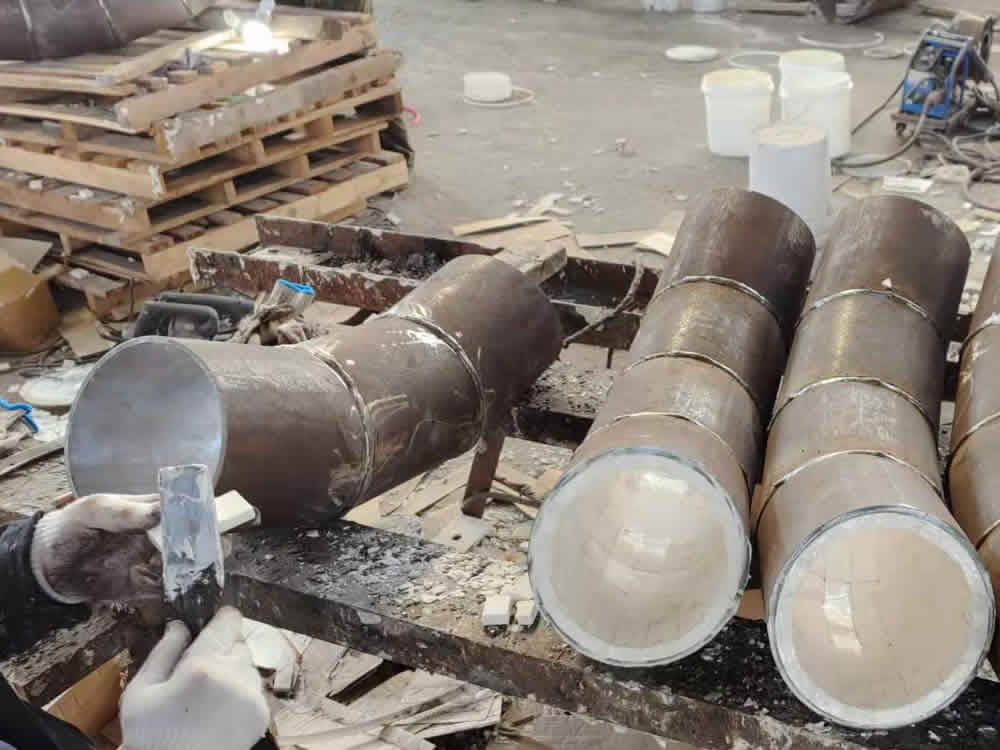
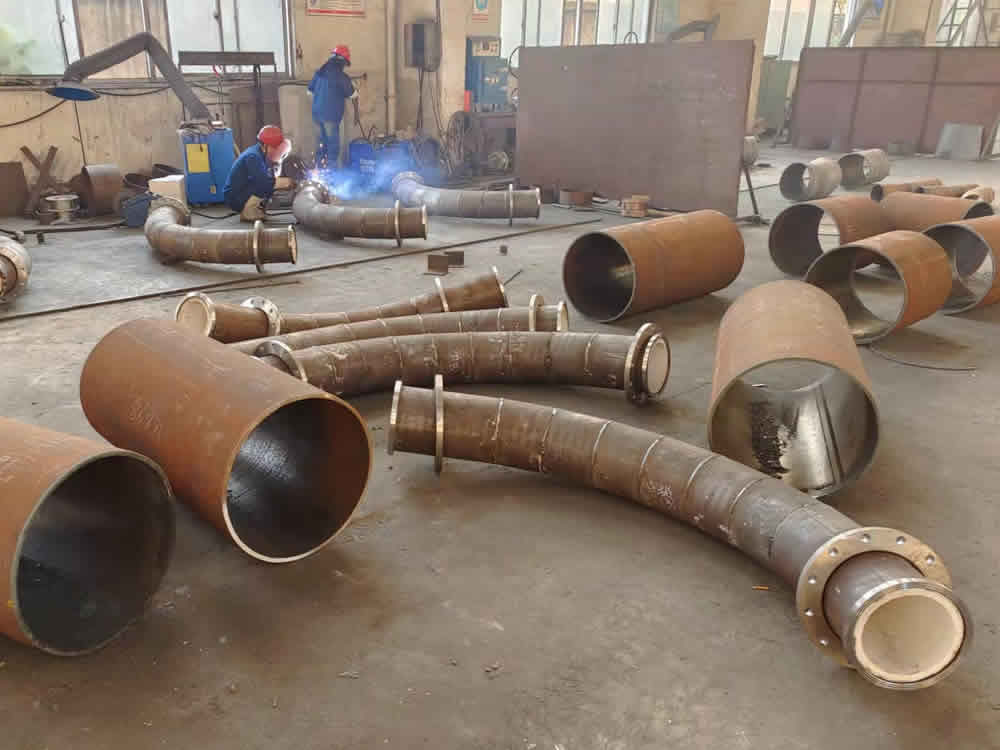
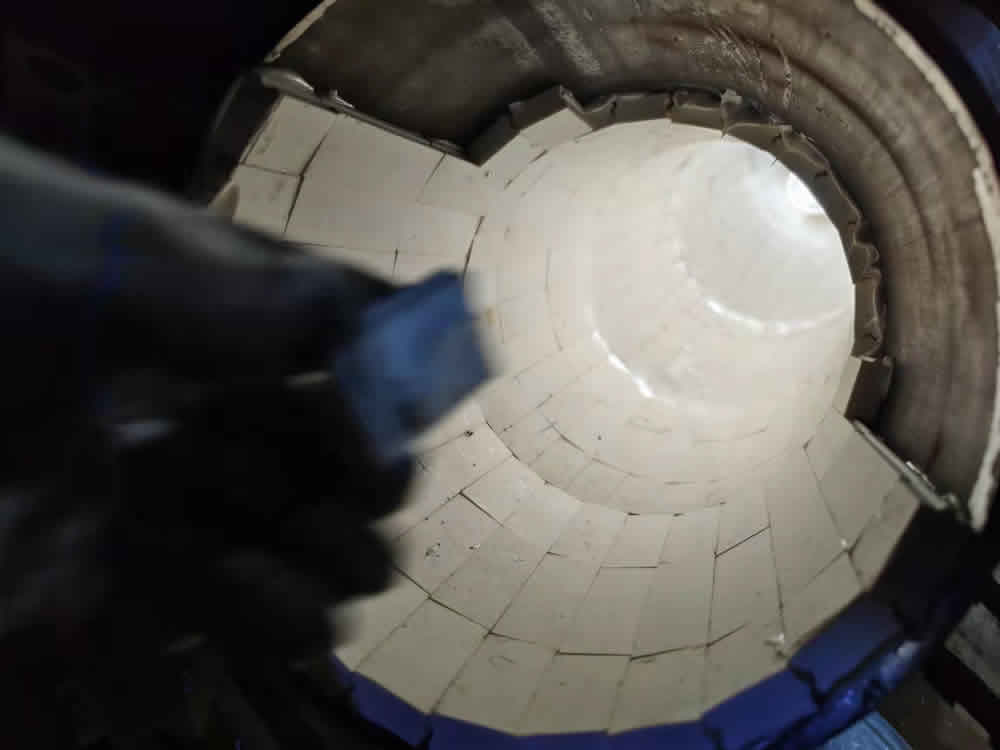
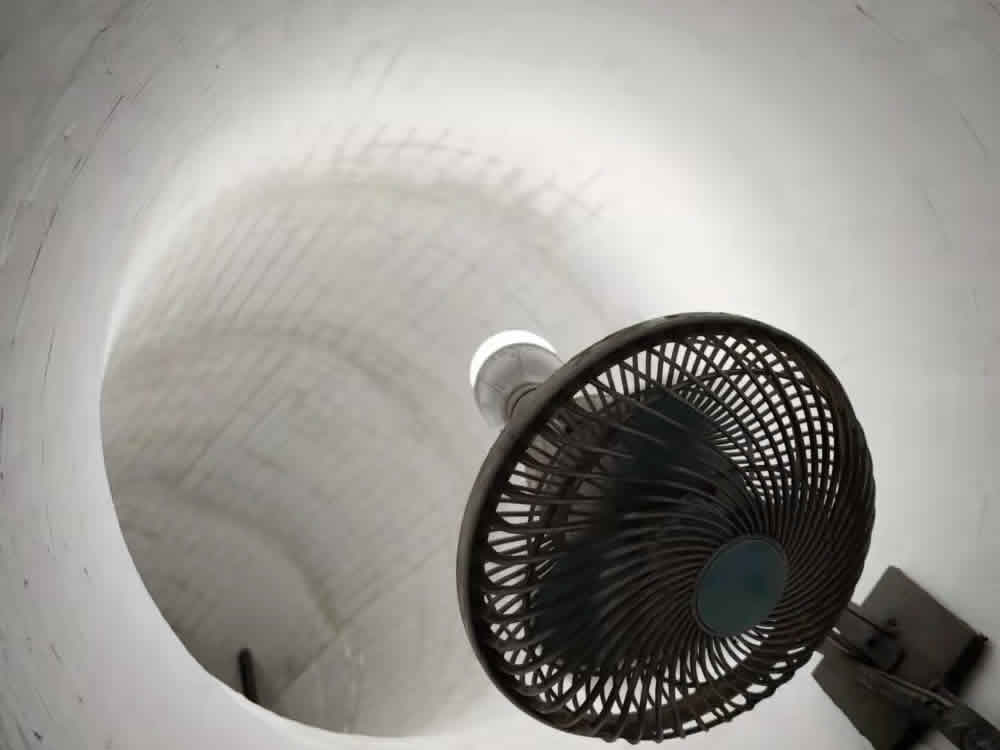
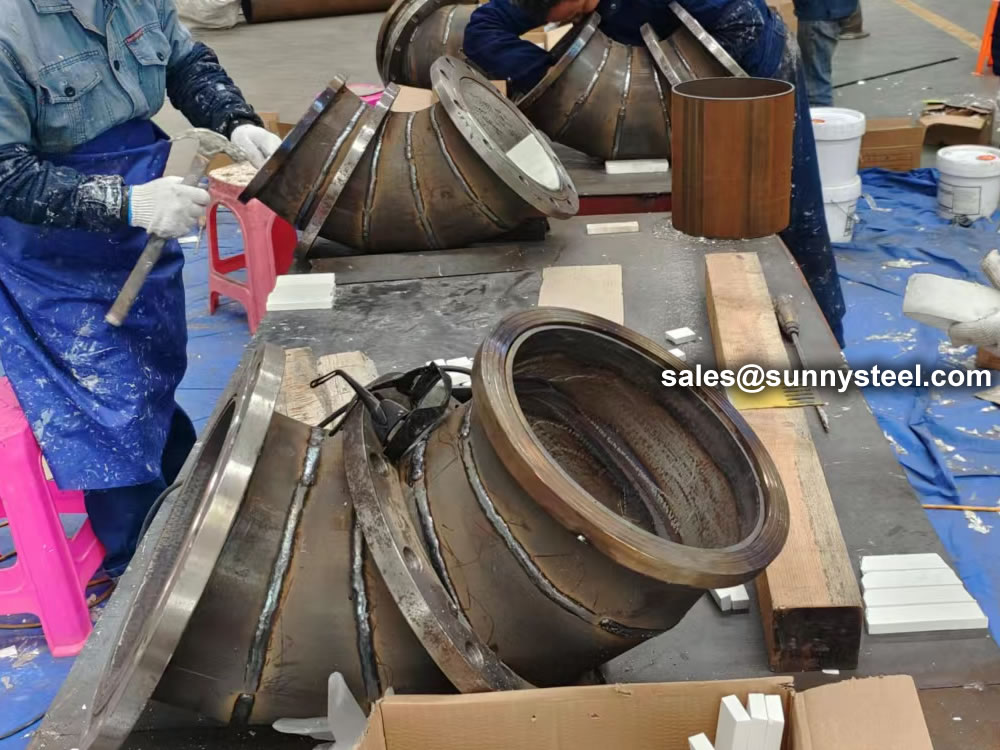
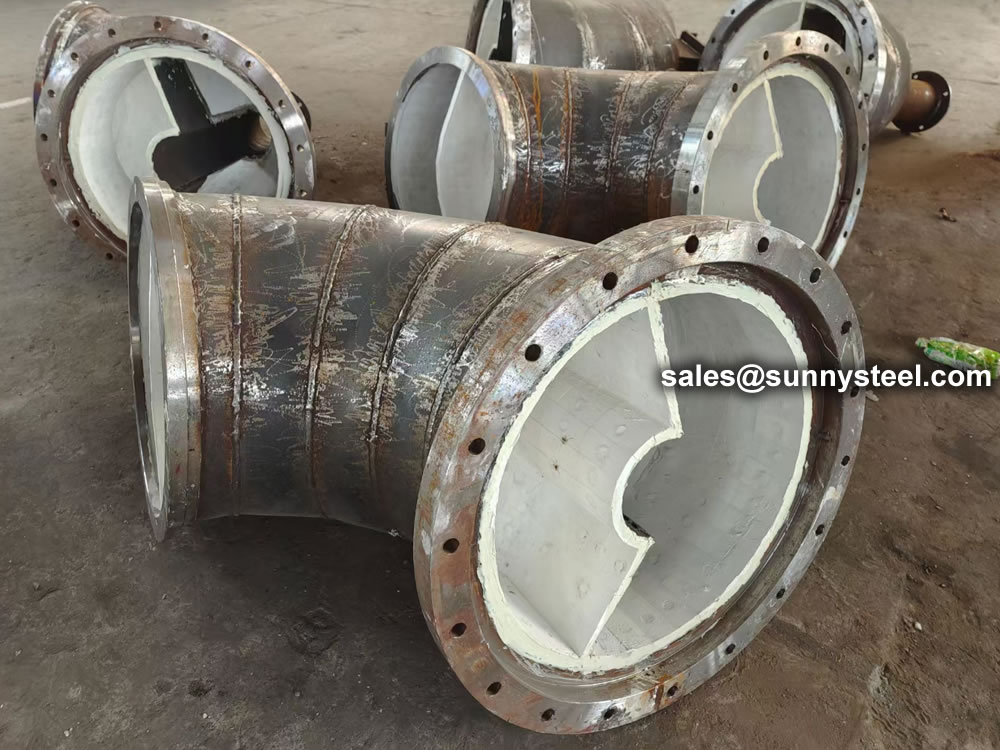
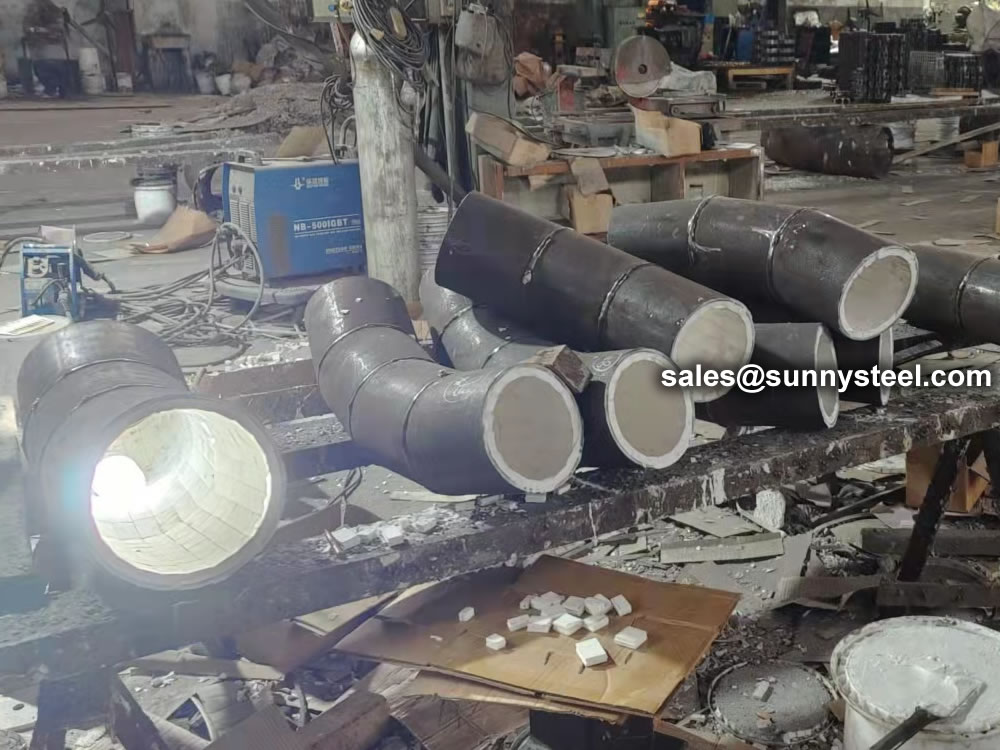
The ceramic tiles are pasted to the inner wall of the steel pipe with high temperature wear-resistant glue to play a wear-resistant role.
| No. | Process | Standard | Inspection |
|---|---|---|---|
| 1 | Cleaning the inner surface of the fitting | Clean up all the rubbish and floating ash on the inner surface of construction equipment and pipe fittings. | Checked by the construction supervisor. |
| 2 | Rust removal, oil removal, paint removal | The rust, grease, and paint on the bonding surface must be completely removed without leaving any traces. Use iron sand skin, angle grinder, and soft sand skin to polish to see the metallic luster. After cleaning, wipe the surface with a cloth until there is no trace of dirt. | After the inspection and acceptance by the quality inspector, the construction of the next process can be carried out. |
| 3 | Formulated Adhesives | It must be measured in strict accordance with the prescribed proportion, and how much should be used; it must be stirred evenly, and the overall mixing should not be less than 4 times; if the mixed embedded material is added, the binder must be mixed well before adding the mixture and mixing Not less than 3 times. | Assigned by designated personnel. |
| 4 | Repair of the adhesive surface | If there are potholes on the pasting surface, especially if there are large potholes on the pasting surface of the old equipment, the wear-resistant ceramic sheet must be gradually filled with embedded materials. | After the inspection and acceptance by the quality inspector, the construction of the next process can be carried out. |
| 5 | Paste wear-resistant ceramic tiles | There should be no dust or dirt on the surface of the ceramic tiles. The surface of the repaired inlay material must be leveled. The pasting surface must be wiped again. Scrape the adhesive on the pasting surface for 1-2 times and scrape it flat. Scrape the back of the ceramic sheet for 1 It is necessary to ensure that there is a certain thickness of uniform adhesive available for pasting. | Checked by the person in charge of the construction of the pasted ceramic tiles. |
| 6 | Repair of gaps and corners between ceramic tiles | The gaps exceeding 3 mm must be repaired with wear-resistant and anti-corrosion fillers, the edges and corners must be neat, and the bevels must be trimmed with special ceramic tiles and then filled with fillers. | After the repair, the person in charge of the construction and the quality inspector will conduct a comprehensive quality inspection, and submit it to Party A for acceptance after passing the inspection. |
| 7 | Maintenance time | After construction and repair are completed, it can be put into use after natural maintenance for more than 12 hours after acceptance by Party A. |
There are probably hundreds of different methods for packing a abrasion resistant pipe and Elbows, and most of them have merit, but there are two principles that are vital for any method to work prevent rusting and Sea transportation security.
